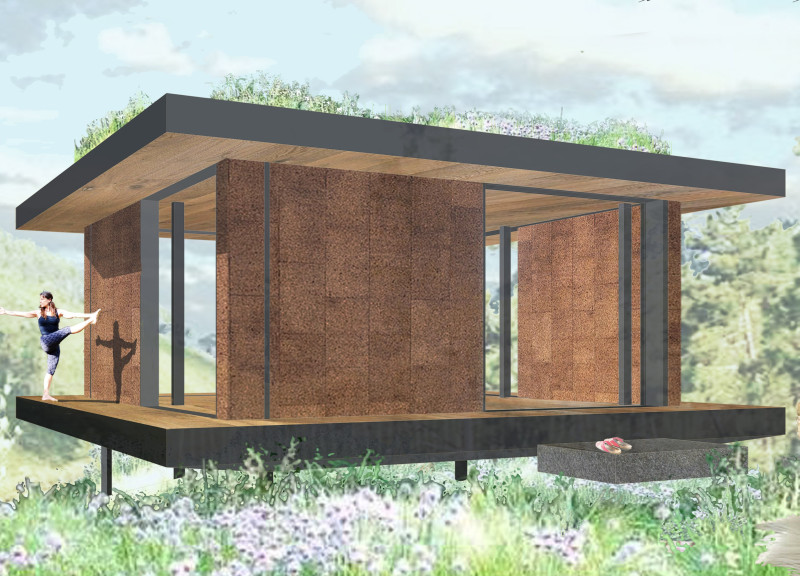5 key facts about this project
The design presents a contemporary interpretation of the primitive hut in Vale de Moses, functioning as an eco/yoga retreat. It aims to create a strong connection between human senses and the fundamental energies of nature. Inspired by local beehives known as "cortiços," the structure takes on a quadrangular form that fits naturally into the landscape while maintaining a minimalist design.
Functionality and Modularity
The design focuses on prefabrication, featuring a sturdy seismic structure that allows for easy assembly and disassembly. This modular setup makes it possible to adjust the layout, enabling units to be grouped or rearranged as needed. This flexibility accommodates changing requirements, ensuring that the space remains practical for its users.
Sustainable Design Strategies
Sustainability is a significant aspect, evident in the inclusion of a green roof that enhances insulation and supports biodiversity. Additionally, a Blue-roof System is integrated to capture and store rainwater, which aids in irrigation and fire safety. These strategies highlight the commitment to environmental responsibility and efficient use of resources.
Material Usage
Selected materials play an important role in the overall design. The exterior facade is made from Natural Expanded Cork Agglomerate, which provides thermal insulation and structural support. Inside, Natural Sweet Chestnut Wood (Castanea Sativa) is used for flooring, connecting the interior spaces with nature. Large areas of clear glass in the windows allow for natural light and open views of the surrounding environment.
Energy Efficiency
Energy efficiency is also a priority. A dry radiant floor system helps maintain comfortable temperatures throughout the year. Additionally, orientable photovoltaic and thermal solar hybrid panels are utilized to generate energy for lighting and water circulation. This approach emphasizes effective energy management, aligning with sustainable principles.
The design thoughtfully balances built spaces with nature, inviting interaction with the landscape through its functional and simple forms. Each element works together to create a serene environment, fostering a deeper connection between occupants and their natural surroundings.






















































